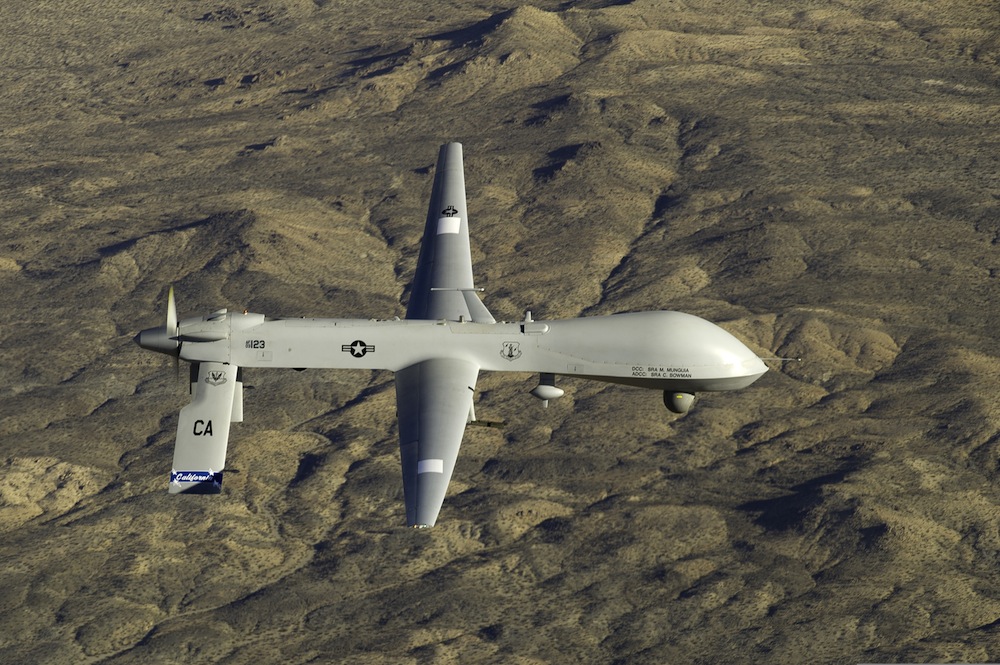Drones Could Grow to $11 Billion Industry by 2024

Love them or hate them, drones are here to stay — at least for the foreseeable future. A new report detailing the growth of the drone industry finds that over the next 10 years, the amount of money spent annually on drones and their accompanying technologies will likely double worldwide.
An estimated $6.4 billion is currently being spent each year on developing drone technology around the world, according to a report published earlier this month by the Teal Group Corp., an aerospace and defense market research firm headquartered in Fairfax, Virginia. That number is expected to nearly double in future years, bringing the total amount spent on drones for both military and commercial applications to $11.5 billion annually by 2024.
Within a decade, the total amount spent worldwide on research, development, testing and evaluation (RDT&E) of drone technology will reach $91 billion, Teal Group analysts predict. [9 Totally Cool Uses for Drones]
Military Drones
The growth of the drone market is mostly fueled by military organizations in the United States and other countries, according to the report. The United States already uses a wide range of unmanned aerial vehicle (UAV) systems — ranging from micro UAVs small enough to fit in the palm of a soldier's hand, to large UAVs such as the Air Force's Predator drone, which is used for both reconnaissance and air attacks.
This latter type of drone, known as a "hunter-killer" UAV, is where the analysts at Teal Group expect the U.S. military will be investing most of its drone dollars over the next decade.
The United States has already developed unmanned combat air vehicles (UCAVs) that could one day replace conventional warplanes, such as piloted fighter jets, according to the report. Boeing's X-45 Phantom Ray, developed for the U.S. Air Force, and Northrop Grumman's X-47 Pegasus are just two examples of UCAVs that have already been designed and built for the military. Information on how these drone projects are progressing is hard to come by, the report notes, most likely because the U.S. military has deemed the projects classified.
Get the world’s most fascinating discoveries delivered straight to your inbox.
Civilian drones
According to the report, drones used for nonmilitary purposes make up a relatively small portion of today's UAV market, with only 11 percent of all drone technologies currently being developed and produced for civilian uses. However, the report states that by the end of the decade, the share of the market devoted to nonmilitary drones is expected to grow to at least 14 percent of the total market for drones.
"Our coverage of the civil UAV market continues to grow with each annual report, mirroring the gradual increase in the civil market itself," Philip Finnegan, one of the authors of the study and director of corporate analysis with the Teal Group, said in a statement.
The report breaks down civilian use of drones into three main categories:
- Government UAVs: In the next decade, the world can expect to see more drones used for things like border control, law enforcement and wildlife research.
- Commercial UAVs: Agriculture, mapping and natural resource extraction are expected to see increased drone use.
- Hobbyist UAVs: The report finds that the number of mass-produced drones, ranging in cost from several hundred to several thousand dollars, will also likely increase in the coming decade. These drones will be used by hobbyists and certain professionals, such as real estate agents looking to showcase homes.
While Teal Group analysts expect growth in all three of these sectors over the next decade, the group said that the government is the most likely sector to increase investment in UAV systems in the years to come. Law enforcement agencies and other civil government organizations will have to spend more on drones than will hobbyists, for example, because the types of drones these organizations use will probably be much more expensive.
The report also says that drones used for governmental purposes will likely have much easier access to airspace than drones used for other purposes.
Follow Elizabeth Palermo on Twitter @techEpalermo, Facebook or Google+. Follow Live Science @livescience. We're also on Facebook & Google+. Original article on Live Science.


